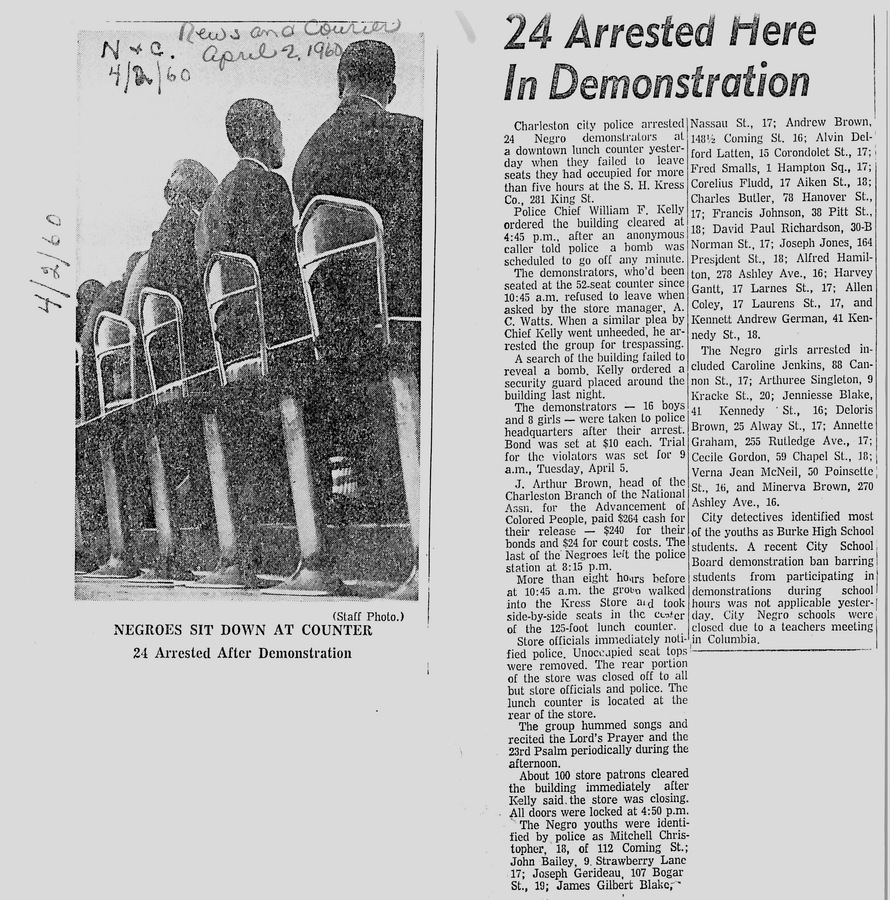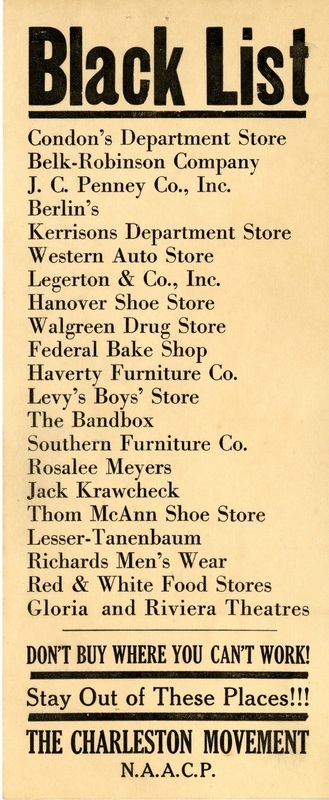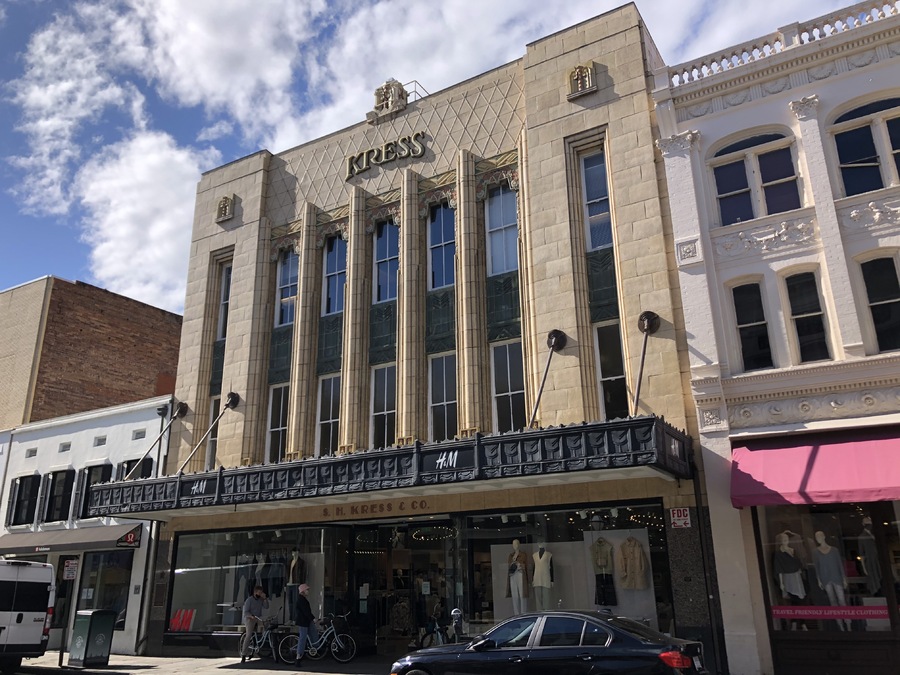Kress Building, 281 King Street

The S.H. Kress building was built in 1931 by the S.H. Kress chain of variety stores. The Art Deco building had an innovative system for bringing supplies from the third floor to the storeroom with a dumbwaiter as well as a lunch counter.
The S.H. Kress building was built in 1931 by the S.H. Kress chain of variety stores. The Art Deco building had an innovative system for bringing supplies from the third floor to the storeroom with a dumbwaiter as well as a lunch counter. Unfortunately, as was typical for the time in South Carolina, the lunch counter was segregated. Black customers were denied service at the lunch counter, which was reserved for whites only. As with other businesses on King Street, this store served as a reminder to Black Charlestonians that they were second-class citizens in their own city.
In the year 1960, however, change was in the air. In Greensboro, North Carolina four Black college students sat down at the Woolworth's lunch counter and ordered lunch in early February. What ought to have been a normal action was, in the world of Jim Crow, a radical protest that sparked a mass movement across the nation. This movement soon spread to Charleston as the Black citizens of the city moved to end the practice of segregation through activism.
James Baker was very young, not quite out of Burke High School yet, but he was already coming to a leadership position in activist circles. He had risen to the presidency of the NAACP youth organization, and he planned to use his prominent position to help initiate the Charleston Movement of civil rights protests. For weeks, he and a group of students from Burke met at the Reid center, planning their protest against the segregated spaces of King Street like Kress and Woolworth's.
Initially, Baker had planned to take a group of twenty-four activists in groups of eight to Woolworth's lunch counter on King Street. However, the Charleston Police Department had already gotten word that there was a protest being organized and accurately predicted that it would target Woolworth’s in solidarity with the students in Greensboro. In preparation, they stationed officers outside the Woolworth’s store. This initial plan being foiled, however, did not deter Baker; instead, he redirected the activists to Kress.
The protestors arrived at the Kress lunch counter with enough money to order food, which they attempted to do. Predictably, however, the staff refused to serve them. The management refused to cave to the desire of the activists, and instructed the staff to take great measures to try to drive off Baker and the students.
The Kress workers did more than refuse to serve the students. After the students refused to leave until they could purchase lunch, the Kress workers began attempting to take down the seats at the lunch counter to stop more potential protestors from arriving. This did not dissuade the already-seated protestors, and so the lunch counter staff moved on to more extreme measures. They began scrubbing the counter with ammonia cleaner--producing toxic and nauseating fumes--in an attempt to drive off the protestors. Against these dedicated efforts to expel them, however, the protestors stood fast and insisted that they be served. They did not move until around 4:45 P.M., when a bomb threat was called in. The police arrived and evacuated the building. The protestors were arrested and accused of trespassing inside the Kress building. This demonstration was the spark that ignited the Charleston Movement.
The Charleston Movement consisted of sit-ins and a boycott of segregated stores as well stores that would not hire Black workers. The boycott stemmed from the blacklist that called for the boycott of not just S.H. Kress but also of J.C. Penny, Walgreens, Belk, and many other stores. The slogan, “Don’t Buy Where You Can’t Work,” drove the activism of the boycotts. Eventually, the King Street merchants relented, de-segregating over ninety locations in 1963, and eventually the stores on King Street began to serve all races.
Images



